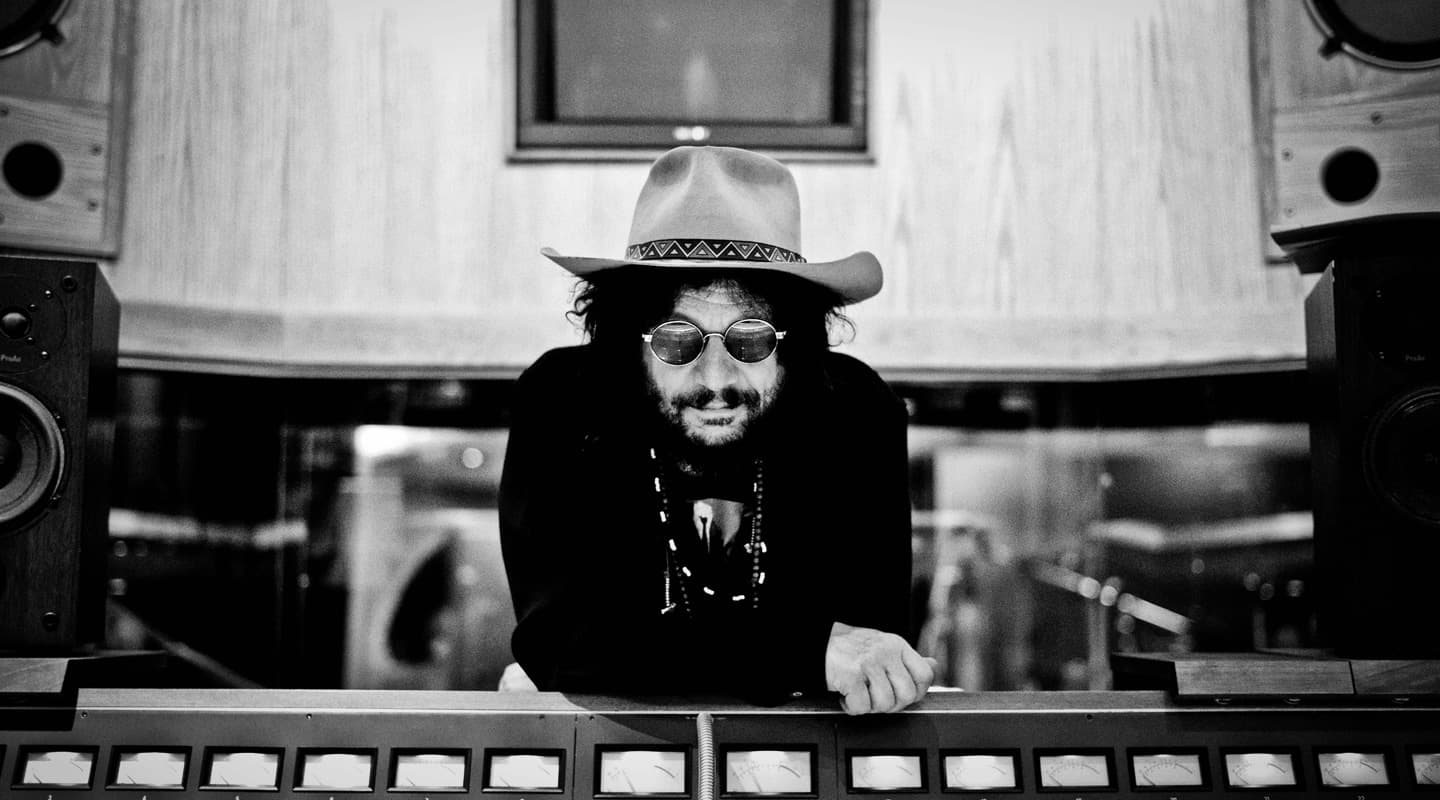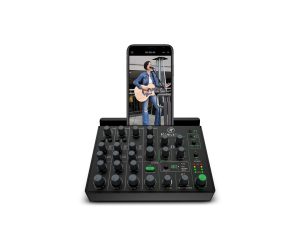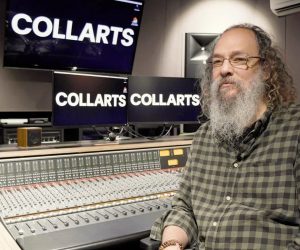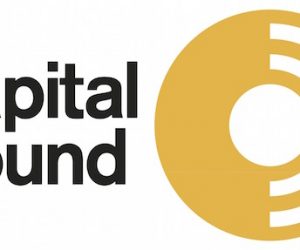
Don Was: The Producer’s Hat
He was once the man from Was (Not Was); he was also a producer of The Rolling Stones, Bob Dylan, Bonnie Raitt, Randy Newman, Marianne Faithful, Willie Nelson, Joe Cocker, and many others. Now he just is... the cat in the hat.
Don Was is one of the most iconic names in the world’s production firmament. He’s the go-to producer for top artists looking for a helping hand in realising inspired, soulful recordings and, in many cases, reviving their careers. Was enjoyed his highest profile as a producer in the ’90s, when he worked with big names such as The Rolling Stones, Bob Dylan, Bonnie Raitt, Randy Newman, Marianne Faithful, Willie Nelson, Joe Cocker, and many others – winning a Grammy Award for Producer of the Year in 1995. For a variety of reasons (see boxes) Was has had a slightly lower producer profile since the turn of the century, but his credits during the last decade have still included big names like The Rolling Stones, Bette Midler, Kris Kristofferson, and The Black Crowes.
Don Was’ co-production of Lucinda Williams’ new album, Blessed – the main focus of this article – shows that Was continues to operate at the highest level. Blessed was recorded in Capitol’s Studio B in Los Angeles, and Was was drafted just three days before recordings began. He co-produced the album with Williams’ partner and manager, Tom Overby, and engineer Eric Liljestrand, both of whom also produced the Williams’ previous album, Little Honey (2008). The latter was Williams’ most commercially successful since her debut album Ramblin’, making one wonder why Was’ involvement was sought at all, and at the last minute. The great producer himself, however, was so keen to work with Williams he never asked her that question.
“To be honest, I don’t know why they asked me! I guess they just wanted to shake things up; you don’t want to keep making the same record over and over. I had bumped into Lucinda in January 2010 at a charity event called MusiCares, which is part of the Grammy foundation and which helps musicians in trouble, and for which Neil Young was the honouree. I was the music director and played bass, and Lucinda was also on the show. We spent some time together and got on very well. I think Tom noticed that, and made a mental note that this could be helpful later on. When they asked me to work on the album, I didn’t need any persuasion: she is one of the greatest artists on the face of the earth and to be in the studio with someone like that was an irresistible offer, especially after I’d heard the demos of her songs. She’s also an incredibly expressive singer. I’ve worked with many great singers over the years, and she’s right up there with them. You make great records with great singers and great songs.”
Blessed has been released in a deluxe 2-CD version: one CD being the regular album, and the other CD containing demos of the same 12 songs, sung by Williams at her kitchen table, recorded with a Samson Zoom Q3. The album contains some of her hardest-rocking songs to date, with Williams’ striking voice in the middle, framed by guitarists Val McCallum and Greg Leisz in the left and right channel, respectively. From the demos it’s not immediately evident why any of the songs ended up being given particular treatments. When Was is asked for clarification, he seems reticent to give too many details, as if concerned about taking too much credit for the making of Blessed.
“I can tell you my perspective on how these tracks got the shape they have on the album, but that doesn’t mean I was the governing force. Lucinda had gotten together with the band before the recordings, but they hadn’t done any rehearsals and the arrangements were not yet done. I sat in the room with the musicians, put headphones on so I was hearing the same thing they were, and I listened to the vocal. As a producer I’m always listening to the vocal. When the vocal shines through, you know you’re doing the right thing. I’d heard the demos, so I knew she sounded good singing these songs alone. If you’re not enhancing that, you’re doing something wrong. You make the singer come forward, and then everything falls into place.”
BLESSED RECORDINGS
Another person who can shed light on the goings-on during the making of Blessed is, of course, engineer/producer Eric Liljestrand. Hailing from New York, his credits include Laurie Anderson, Elvis Costello, John Cale and Bill Frisell, with whom he won a Grammy for Best Contemporary Jazz Album in 2004. Liljestrand is also a composer and has scored the music for several TV-shows. He recalls, “It really worked for Lucinda that nobody had played the songs until the last minute, because she doesn’t like to overwork things or sing the songs too many times. She wants to be really fresh and for the band to be really fresh also. Because Don came in at the very last minute, and we never really sat down together to discuss how we were going to do things, I don’t think anyone was sure of what their role was. But Don usually sat with the musicians, and he has a very positive vibe in the studio. He’s like the ultimate cheerleader: he makes everybody feel good just by his presence.
“We had had a couple of meetings before Don came on board, and each of us had a list of songs with annotations like: “up tempo, ballad, hard,” making reference to the general feel of the songs in vague terms. The actual shapes of the songs revealed themselves while we were working in the studio, and in some cases this took a while. For instance, for a long time we didn’t know where the song Copenhagen was going, and when we did finally capture it, we were none the wiser about it until the next day when we listened back to the tracking. We recorded all the takes – and some songs took 15 takes, others only six or seven but we nearly always used the second-last take. Don often likes that take, so much so that it became a kind of joke, as in: ‘let’s do one more, so the one we just did will be the one!’ We recorded everything on ProTools, at 24-bit/96kHz, but didn’t do a lot of micro-editing. If we did edit something, we were generally taking out or adding big chunks.”

AN UFLAGGLINGLY GOOD ATTITUDE
Don Was’ cheerleading vibe is also acknowledged in the liner notes on the album, where he is credited with “unflagging and unforgettable good attitude.” Continuing his portrayal of the sessions, Was explained, “My job as a producer is to create an inspiration-friendly environment, and one way of doing that is by casting. Casting the right people is important. I recall an actor complaining that Woody Allen didn’t give him many directions, and Allen’s thing is: “I cast the right actors so I don’t have to tell them how to deliver each line.” It’s the same with producing records. The right musicians are the ones that will understand where the artist is coming from, and they’ll have great ideas, so I don’t have to do too much. I want to be the dumbest guy in the room! When you’re working with a band it can be relatively easy, because you just want the band members to be themselves, but it can be much harder achieving that working with session musicians. But with Lucinda’s album it was easy. Everything was easy with this record. It was a f**king pleasure to make this record!”
“We cut two songs a day, recorded live in the studio with Lucinda singing and playing acoustic guitar, two electric guitars, keyboards (usually B3), bass and drums. The band was set up in a circle in the main room with baffles between them, and some amps placed upstairs. They were all wearing headphones. Lucinda was in an iso-booth with her guitar, and a lot of credit must go to Eric – it’s not easy to record vocals and acoustic guitar at the same time and get a good balance. He really is the architect of the sound of that record: he did a magnificent job in a very challenging situation. I should point out that 100% of Lucinda’s vocals came from the live tracking. We didn’t overdub a single vocal on this record. So the take was the one on which everything worked well vocally. Lucinda’s performance didn’t change much from take one to, say, take seven; it was more a matter of how we could best complement her singing.
“On Soldier’s Song, for example, the puzzle was how to keep the backing as emotional as her vocal. The solution was to play less, paring down the instrumentation and putting space in, while keeping the dynamics. The extended guitar solos in the ending of Seeing Black weren’t planned. Everyone was digging the song so much they just kept going. It’s a very musician-like thing to do [laughs]. But as a producer you worry about that, because if everybody gets all hyped up, and it’s not your final take, on the next take the musicians tend to start there. Consequently, that take will be too hyped up and manic. So you don’t really want those things to go on for too long. You don’t want to burn people out either. But there was no controlling them! There were extended endings to many songs, they just happened, and people were having fun and it felt great. We did some mixes of Seeing Black that were shorter – with some edits and fades – but we immediately missed the feel of those extended solos. Finally we said: ‘f**k it, put the whole thing on!’
100% of Lucinda’s vocals came from the live tracking. We didn’t overdub a single vocal on this record
CAPITOL: U67s FOR DAYS
Regarding the gear with which Blessed was recorded, Was stated that he “pretty much left the sounds up to Eric [Liljestrand]. If I hadn’t liked it, I would have said something, but Eric has worked with Lucinda and these musicians for a long time, and I was knocked out with the sound from the first song.” So Liljestrand detailed the ins and outs of the gear he used:
Eric: “I should preface everything by saying that Capitol has one of the best stocks of vintage mics I have ever encountered. They were bought new, have never left the building, and have been well maintained. I recorded Lucinda with a Neumann U48, which was in a box labelled ‘Frank,’ as in Frank Sinatra! I took a picture of the box because I simply couldn’t believe it. There’s such a sense of history in that building. Lucinda’s (and Frank’s) 48 went through the Neve 8078 console, which is a good vintage desk that’s in fantastic shape. All mics apart from the ones on the piano went through that board. I used some desk EQ on Lucinda’s voice, and then put it through an LA-2A before going into ProTools. There was quite a lot of spill between Lucinda’s vocal and her acoustic guitar, so I recorded the latter with a DI as well as an AKG 451 or a Sennheiser small condenser, the idea being that the DI would feature while she was singing, and the 451 would take over when she wasn’t.
“Regarding the drums, I had an Electro-Voice RE20 on the inside kick and a Neumann U47 FET on the outside, a Shure SM57 on the top of the snare and an AKG C-451 or 452 underneath. The toms luxuriated in C12As, the overheads U67s, while the hi-hats were recorded through a Shure SM81. I also had an RCA 44 out in front of the kit and a ride cymbal mic, which, from memory was another small-diaphragm AKG 451. The bass guitar was recorded with a Manley DI and another U47 FET on the cabinet. I put the mic and the DI of the upright bass through a Fairchild compressor. The upright was also recorded with a pickup and a 451 – I like the sound of a small diaphragm on a bright-sounding bass. Val’s electric guitar cabinet was recorded with an SM57 close and a U67 about four feet back. I did the same thing with Greg’s amp, but in his case I used the Sennheiser 409 close to the amp. Capitol has so many U67s… I don’t like them normally, because they sound a bit brash and brittle to my ears, but Capitol’s are so beautiful-sounding that I was happy to use them.
“The pedal steel went through Greg’s amp and was recorded with the same mics. The National steel was recorded with a Sennheiser and a Schoeps CMC6 with MK2 capsule, so it’s an omni. I really favour omni mics on acoustic guitars, you get a more neutral and open sound, and there are a couple of acoustic guitar overdubs done by the guys, and they all had the same Schoeps mic setups. The keyboards were a Casiotone which went direct; a Hammond organ recorded with two Sennheiser 421s on the highs and an RE20 on the lows; and the piano had (yet another) pair of 67s on it, which I moved about from song to song. Sometimes I had them positioned as an X/Y pair outside the piano, sometimes as a spaced pair, sometimes I had them rock ’n’ roll style above the hammers, depending on the sound we were after. The piano mics were the only ones that didn’t go through the Neve; for them I used Amek 9098 preamps. There was also a bit of accordion, which was recorded with the Schoeps mics. I had a booth set up with the Schoeps in it, so anybody with an acoustic instrument could jump in and be ready to go. The ‘Nail File guitar’ that I’m credited with on the album was me bowing a guitar with an emery board, played really fast with a lot of echo. I recorded it on two tracks in ProTools, and had extra long delays on each track, feeding back into each other, like a Robert Fripp technique. Finally, Capitol also has six Les Paul-designed echo chambers, two of which we used. I always tracked the chamber in case we mixed somewhere else.”


ENTER BOB
Blessed is one of the best-sounding albums to have been released in recent years, and has been acknowledged as such by several reviewers and various fan internet blogs. The quality of the players and singer, as well as Eric Liljestrand’s engineering skills, are undoubtedly the primary ingredients, but in addition Don Was arranged for the album to be mixed by the legendary Bob Clearmountain, best known for his work with Roxy Music, Springsteen, The Stones, Bryan Adams, Crowded House and countless others. The result is, perhaps unsurprisingly, a very rocky and muscular sound, even on the many more meditative tracks, but it suits the music perfectly. Apparently Liljestrand, who mixed Little Honey, had also already mixed Blessed when Was suggested to call in Clearmountain. What prompted the production heavyweight to finally, umm… throw his weight about?
“Eric is a great mixer,” explained Was, “so it’s nothing to do with his ability. It had to do with objectivity of every one of us on the team. I recall asking for some more room sound on one track, but it actually made it blurrier. Sometimes you want the objectivity of a fresh person coming in, and someone like Clearmountain has earned the respect of everybody before he even mixes a thing. So everybody was very hands-off while they let him do his thing, and he was able to cut straight to the essence of each song without attachment to the rough mixes that we had. I also think you want to have contrasts in ideas as well as in sound: sometimes you use Fender; sometimes you use Gibson; sometimes you record on a Neve, and also mixing on a Neve doesn’t give you as much vibrancy as when you’re recording on a Neve and mixing on an SSL.”
Another thing that contributed to the excellent sound of Blessed is that the album wasn’t flattened to death at the mastering stage. It was mastered by Ted Jensen at Sterling Sound in New York, and Was commented: “I’ve used Ted a lot to master albums I’ve worked on. I trust him, and don’t feel I need to go to the mastering sessions. In any case, I don’t see the practical value. You don’t know the room, so you don’t know what you’re listening to. Also, you can only control so much. In 1993 I was involved in the reissue of The Rolling Stones’ back catalogue for Virgin Records where we really put things under a microscope – Bob Ludwig mastered it, and it sounded great. But when we started A/B’ing manufacturing CD-lathes from different plants – even two lathes from the same plant – they sounded different. It depended on who was on the night shift, and which room they were using, and so on. Or there’d be a guy somewhere who thinks that it needs more treble. Total quality control is unenforceable, so you have to choose your battles. If you get the songs you want on the record, without the record company demanding you do a Motown cover for a single or something, you got off lightly.
“I’d like to tell you that things were better in the days of vinyl, and that we had more quality control back then, but I don’t know. Historically, there are some horrible-sounding records that are among the best records ever made, because the performances and the songs are so good. Nobody compared pressings from Minneapolis with pressings from London. There were so many imperfections that you just accepted these things. Now in the digital age we expect everything to be perfect all the way down the line. But it’s not. Ultimately you have to fall back on the fact that everything lives or dies with great vocals and great songs. If it also sounds good, you got the best of both worlds.”
Seems like Williams, Overby, Liljestrand, Was, and Clearmountain achieved all this with Blessed.
















RESPONSES